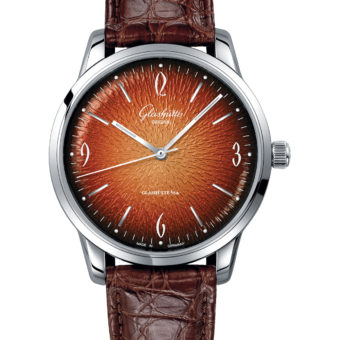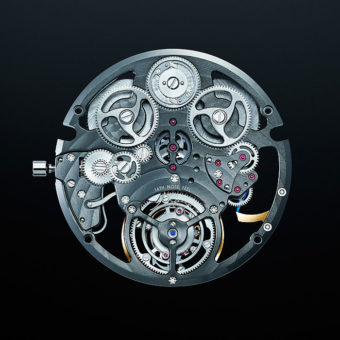The Double Tourbillon 30º is one of the most important timepieces in the Greubel Forsey catalog. As the first timepiece unveiled by the manufacture at Baselworld 2004 — after five years of development by Stephen Forsey and Robert Greubel — it set in motion all of the success and innovations that Greubel Forsey has accomplished in the 15 years since. However, it was only seven years after the Double Tourbillon 30º appeared that it received its first significant update with the Double Tourbillon 30º Technique, a watch that reconstructed the movement of the now well-known timepiece in a way that the wearer could observe its movement parts with an as unobstructed view as possible.
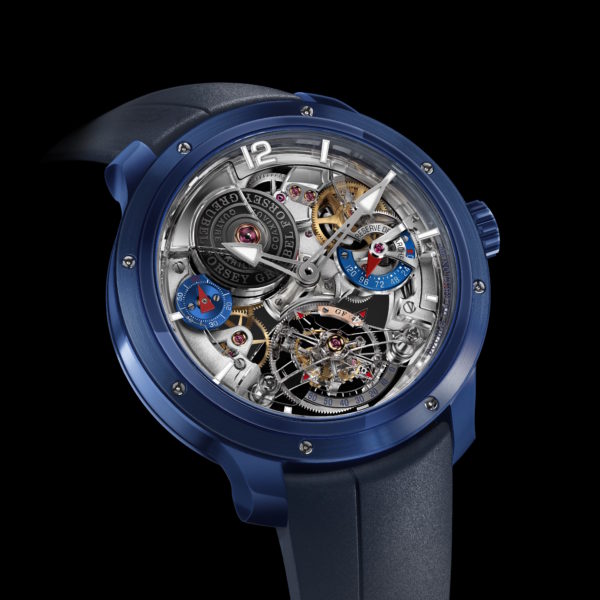
The Double Tourbillon 30º Technique ended up being another major success for the young brand, claiming first prize at the Concours International de Chronométrie, where it achieved a record score of 915 points out of 1000 with an average timing rate of between 0.3 and 0.8 seconds per day, as well as taking home the Complicated Watch Prize at the GPHG in 2009. In 2010, a different version of the watch, the Double Tourbillon 30º Historique, took home the prestigious Aiguille d’Or at that year’s GPHG.
So what makes the Double Tourbillon 30º so worthy of acclaim? As the first of Greubel Forsey’s proprietary “Inventions,” it approached the concept of a tourbillon as a regulating device in an inherently different way. Basically, a single 60-second tourbillon inclined at a 30º angle is surrouned by an outer tourbillon that makes its own rotation every four minutes. (The two tourbillon cages combined account for 132 of the movement’s 421 total parts.) In effect, this averages out positional errors brought on by effects of gravity on the watch’s oscillator to a much higher degree than typically seen on a tourbillon-enhanced timepiece. The manually wound, manufacture movement features four coaxial barrels that are coupled to a spherical power-reserve differential, providing running autonomy up to 120 hours when fully wound.
What we have today is a brand new take on the Double Tourbillon 30º Technique. For the first time in the brand’s short history, it has applied ceramic to a watch’s case (previous limited runs of the timepiece were offered in rose gold, white gold, platinum, titanium, and, memorably, sapphire crystal). While ceramic might be the most identifiable aesthetic update, there are a number of firsts within the movement construction as well.
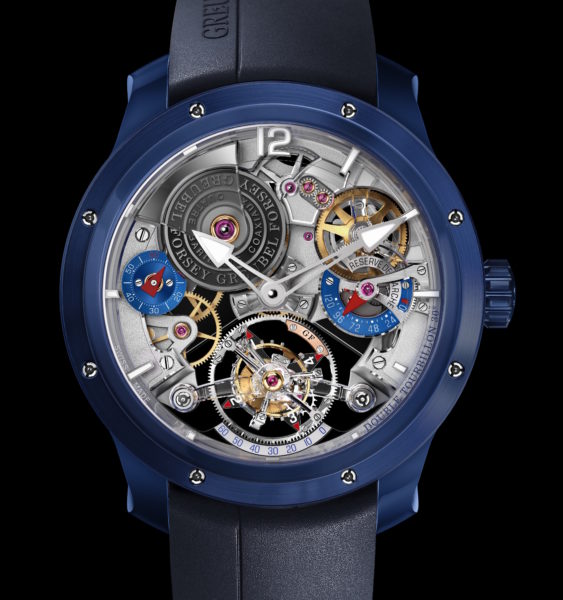
The last version of the Double Tourbillon 30º Technique was released with a sapphire crystal case, but the movement featured an almost identical construction to its precious-metal predecessors. While today’s release features the equally modern ceramic case, its movement architecture is has now received a sapphire crystal update. Once again, Stephen Forsey and Robert Greubel revisited the watch’s movement construction to see how its wearer could benefit from the application of the transparent material. The hour and minute ring, as well as the four-minute tourbillon-rotation indicator at 6 o’clock are all made from sapphire crystal to allow light to travel into all levels of the movement design. But that’s not all, the three-dimensional bridges have each been rendered from a single block of sapphire crystal — something the brand notes as particularly challenging. The flanks of each bridge are hand-polished using a variety of graining techniques and specialized tools. The angles have been beveled to the point of revealing a matt finish, contrasting with the natural transparency of the sapphire. Due to this, all of the wheels and pinions — something typical hidden within the crevasses of a watch’s movement design — have been fully revealed.
Over on the dial side, the polished gold hands — filled with SuperLuminova at their precipice — have been openworked in the traditional style of the Double Tourbillon 30º. What is new here is that the tourbillon bridge, barrel bridge, differential bridge and power-reserve bridge (previously executed in nickel silver) have been recreated in sapphire for consistency’s sake. One of the few aspects of the watch face not rendered in sapphire are the small seconds and power-reserve indicators that are made of gold and blued to offer a contrasting effect against the frosted main plates and complement the blue ceramic case.
Visible from the exhibition caseback, the gear train bridge, now done in sapphire, features a multi-level construction with a number of countersinks that allow the wheels to overlap with the sapphire. The lower tourbillon bridge that was previously made of steel, has been given the same treatment. Never a brand to leave something behind, even the problematic presence of screws in the movement has been dealt with, thanks to a mounting system for the bridges that will absorb excessive shocks.
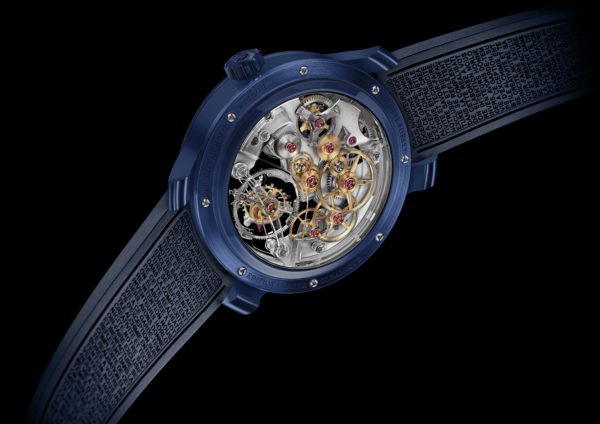
While the refreshed movement design for the latest version of the Double Tourbillon 30° Technique is perhaps the most noteworthy aspect of this release, the ceramic case has a lot to offer as well. More and more, we’re seeing brands embrace colored ceramic options, and Greubel Forsey has dove right in with a blue option (though I wouldn’t be surprised to see various other colorways emerge over the next year). The benefit of colored ceramic is that, while difficult to achieve initially, the color won’t wear away as it is a property of the material itself, meaning that the blue seen in the images of the Double Tourbillon 30° Technique in this article will be the same blue found on the watch 20 to 30 years down the line.
One of the main benefits of ceramic is its general resistance to scratches and other damage. While that is great news for people that like to wear their watches out and about, it provides issues when it comes to finishing, something that Greubel Forsey prides itself on. The caseback, caseband, and bezel are all crafted from a single block of ceramic before undergoing a series of hand-polishing and graining. The case dimensions come in at 48.40 mm in diameter and 17.77 mm in height. Finally, the watch is available with a matching blue rubber strap with a titanium-folding clasp that has been decorated with a hand-engraved GF logo. The crown – also constructed out of blue ceramic – features an engraved GF logo as well.
While it is common for leading independent brands to gradually release a number of case material options for each specific release, it’s rare that a brand reworks a watch’s entire movement just to offer something different for its collectors and loyal followers, but that is exactly what Greubel Forsey has done here. Limited to a total of 11, individually numbered pieces, the Double Tourbillon 30° Technique in ceramic is exclusive to U.S.-based collectors. The first time it will be available for the public to view will be at WatchTime New York on October 25-26, 2019 — you can purchase your tickets here. As expected with any Greubel Forsey timepiece, the price is available upon request.




